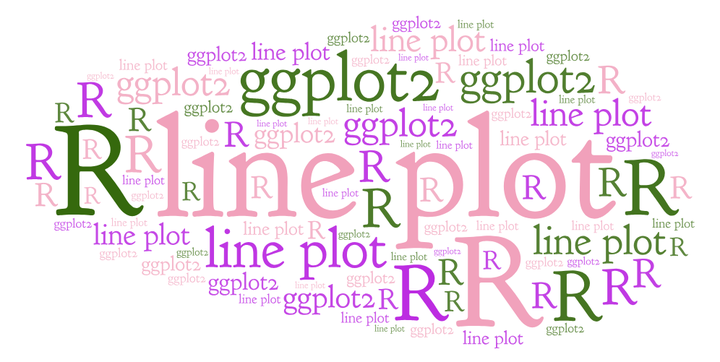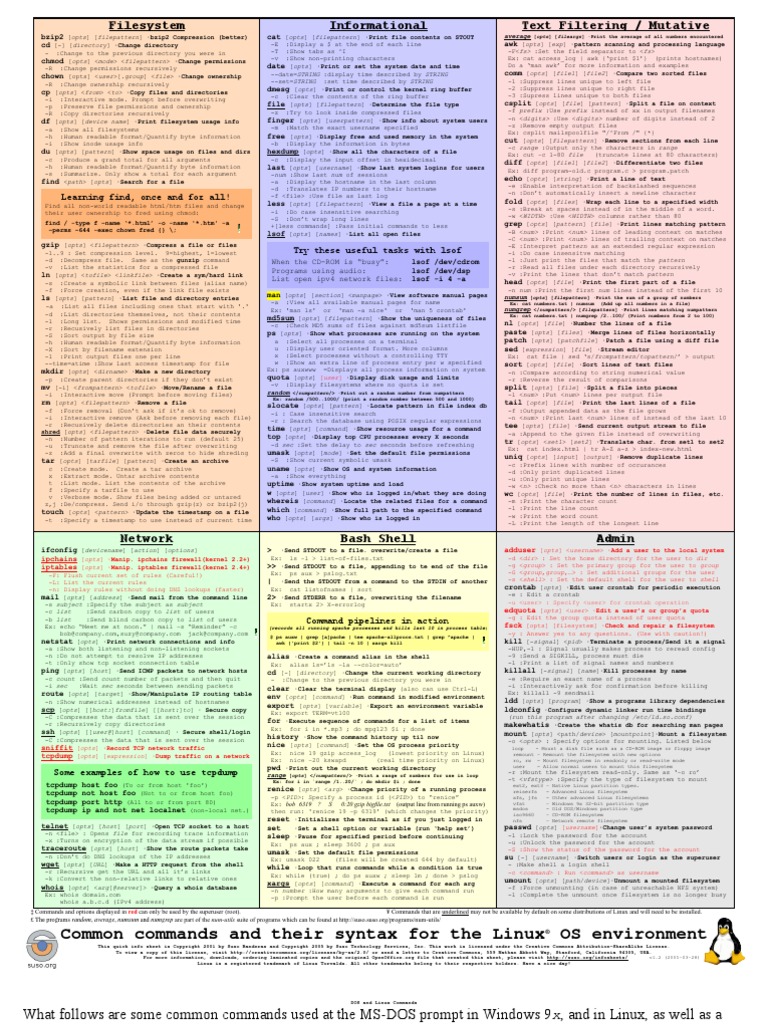To read column data from a file in bash, you can use read, a built-in command that reads a single line from the standard input or a file descriptor. When combined with for/while loop, the read command can read the content of a file line by line, until end-of-file is reached. If each line contains multiple fields, read can read individual fields and store them into supplied variables. By default, read recognizes whitespaces as a separator for different fields. Here, filename is the input file which you want to be open and read with read command.
It will read the file line by line, it will assign a each line to the line variable. While loop will be terminated once the all lines are processed. The internal field separator is set to the null string to preserve leading and trailing whitespace which is the default behavior of the read command. One common task in day-to-day shell scripting jobs is to read data line by line from a file, parse the data, and process it.
In bash, you can easily read columns from a file and store them into separate variables for further processing. In this tutorial, let me demonstrate with examples how you can write a shell script that reads columns into variables in bash. Additionally it is necessary to set IFS to an empty string, because otherwise read would still strip leading and trailing whitespace. The input file ( $input) is the name of the file you need use by the read command. The read command reads the file line by line, assigning each line to the $line bash shell variable.
Once all lines are read from the file the bash while loop will stop. The internal field separator is set to the empty string to preserve whitespace issues. Create a bash and add the following script which will pass filename from the command line and read the file line by line.
The first argument value is read by the variable $1, which will include the filename for reading. If the file is available in the specified location then while loop will read the file line by line and print the file content. This script will take the filename from the command line argument. First argument value is read by the variable $1 which will contain the filename for reading.
If the file exists in the current location then while loop will read the file line by line like previous example and print the file content. We use the read command with -r argument to read the contents without escaping the backslash character. When writing a bash script, depends on the automation flow sometimes the script has to read the content from the file line by line.
Here we learn 3 methods in a bash script to read file line by line. The simplest way to read a file line by line is by using the input redirector in a while loop. In this article, Devbeginer.com has discussed how to read lines using the while loop in bash programming. You have implemented different methods using the bash script or you can simply use a text file to perform reading a file line by line task. If you are interested to learn more examples then using the above-mentioned syntax you can execute on your system as well. I hope you enjoyed this tutorial and would be unique for you.
This article is all about how to read files in bash scripts using a while loop. You should be familiar with different methods and which method is more efficient to use. In bash, a single task can be achieved in many ways but there is always an optimal way to get the task done and we should follow it.
By default, thereadcommand interprets the backslash as an escape character and removes all leading and trailing white spaces, which sometimes may cause unexpected behavior. To disable backslash escaping, we're invoking the command with the-roption, and to disable the trimming, the internal field separator is cleared. Blank Line Not IgnoredSee the result, blank line is not ignored. Also, an interesting thing to note is how white spaces are trimmed by the read command. A simple way to ignore blank lines when reading the file content is to use the test operator with the -z flag which checks if the string length is zero. Now let's repeat the same example but this time with a test operator.
Each line's contents are stored in the $line variable. Within the while loop, the echo command prints the $line variable's contents. The -e argument allows echo to interpret special characters such as the newline character \n. From this approach, we can read the contents of a file using the cat command and the for a loop. We use the same approach for a loop as in the while loop but we store the contents of the file in a variable using the cat command. The for loop iterates over the lines in the cat command's output one by one until it reaches EOF or the end of the file.
We can use the read command to read the contents of a file line by line. We use the -r argument to the read command to avoid any backslash-escaped characters. In the above code, we use $1 to take file path from command line argument.
In our while loop we read the file line by line and output it using printf statement. This will ensure that whitespaces are not trimmed, backslashes are escaped, and last line is not skipped if it is missing a terminating linefeed. It reads the content of the file file_name one line at a time and prints the lines one by one in the terminal. The loop is executed until we reach the end of the file. The IFS is set to the null string, which helps to retain leading and trailing whitespaces.
We can also create a bash script file which can be called from the bash environment in order to read the specified file line by line. We will use the $filename variable in order to store the file path and name. We will use "read_line_by_line.sh" as the script file name. The bash provides the read command which is a built-in command provided by default. The read command reads the given file for a single line every time it called.
The read command can be merged with the while loop where multiple lines can be read repetitively. This can be done with a one-liner or single line bash command line below. This tutorial explained how to read file content line by line using bash shell script with examples.
It helps searching strings in a file by reading lines individually. The -r argument appended to the read command prevents the interpretation of any backslash-escaped characters while reading the file's contents. There might be instances where you want to read the contents of a file line by line using a BASH script. In this section, we will look at different ways to do just that. We will use BASH commands and tools to achieve that result. We make use of the read and cat commands, for loops, while loops, etc to read from the file and iterate over the file line by line with a few lines of script in BASH.
Suppose, you want to read the file, company.txt, line by line from the command line without 'cat' command. While loop will read each line from the file company.txt in each step and store the content of the line in $line variable which will be printed later. Run the above script with employee.txt file as argument value.
Along with while we will use the read command to read the contents of a file line by line. Below is the syntax of how while and read commands are combined. Now there are different ways to pass the file as input and we will see them all. Often it is a requirement to read each of the line from a file using a bash script. There are various approaches to read the lines form a file. In the below example we have first described how to create a sample file and then run a script reading that sample file.
Sometimes you may need to iterate over lines in file and display its contents. If you need to do this frequently, then it is advisable to create a shell script for this purpose. In this article, we will create a shell script to loop over lines of file in Bash. Actions like reading data from files, working with loops, and swapping the values of two variables are good examples. The programmer will know at least one way to achieve his ends in a generic or vanilla fashion.
Or maybe they'll spruce up the code to make it more efficient or applicable to the specific solution they're developing. But having the basic idiom handy is a great place to start. In this case, you can use the read command to read each line in entirety, and then extract necessary column data by using bash's built-in regular expression. The necessary regular expression is stored in pattern, which matches two patterns; one for user login, and the other for a command entered.
These two match results can be retrieved from a special bash array variable called BASH_REMATCH ($BASH_REMATCH$ for the first match, and $BASH_REMATCH$ for the second match). In this case, though, you need to specify the chosen delimeter in IFS variable. The IFS variable (short for "Input Field Separator") is a special bash variable that indicates the character or characters that separate fields. That's why we have the throwaway variable after the three field variables. If we didn't have it, and the file had more than three columns, the third field would also get the leftovers. When reading a file line by line, you can also pass more than one variable to the read command, which will split the line into fields based on IFS.
The first field is assigned to the first variable, the second to the second variable, and so on. If there are more fields than variables, the leftover fields are assigned to the last variable. We may face several situations in Bash, where we need to process the data stored in a file line by line.
In such cases, we need to read the contents of the file. We use the read command in Bash to read a file line by line. Empty lines are not ignored when you loop through the file content. To demonstrate this I have created a sample file with the below content.
There are 4 lines and few empty lines, leading whitespace, trailing white space, tab characters in line 2, and some escape characters (\n and \t). To prevent backslash escapes while reading file line by line in bash, use -r option of read command. When file content has backslash and escape characters then the read command used to ignore those backslash and escape character. Actions like reading data from files, working with loops, and swapping the values of two variables are good examples. The programmer will know at least one way to achieve their ends in a generic or vanilla fashion. Perhaps that will suffice for the requirement at hand.
Or maybe they'll embellish the code to make it more efficient or applicable to the specific solution they are developing. But having the building-block idiom at their fingertips is a great starting point. Another method to display a file's contents in individual lines is to use the cat command and the for loop. The for loop allows echo to print the lines from the cat command output until it reaches the end of the file. Introduction – Often you need to read a file line-by-line and process data. It is a pretty common task for Linux and Unix sysadmin shell scripts.
You need to use a bash while loop and the read command. You can put literal newlines within single quotes (in any Bourne/POSIX-style shell). For a multiline string, here documents are often convenient. If you want to store the string in a variable, use the cat command in a command substitution. La while loop reads a line from the file, and the flow of execution of the small program passes to the body of the loop. The echo The command writes the line of text to the terminal window.
The read attempt fails when there are no more lines to read and the loop is complete. The following while loop reads four columns in each line of the input file, and store them in four separate variables. The code reads the file by line, assigns each line to a variable, and prints it. Basically, you would see the same output as if you would display the file content using thecatcommand. The internal field separator abbreviated as IFS can be used before the read command is set to the null string that prevents leading or trailing whitespace from being trimmed. Reads a single line from the standard input, or from file descriptor FD if the -u option is supplied.
In some cases, you need to read a file line by line and there are several ways to read a file in a bash script. We can set fields in the file to variables by passing multiple variables to the read command, which will separate fields within a line based on the value of IFS. The while loop reads a line from the file, and the execution flow of the little program passes to the body of the loop.
The echo command writes the line of text in the terminal window. The read attempt fails when there are no more lines to be read, and the loop is done. In the while loop, instruct the read command to read input from a file descriptor by specifying the -u argument and the file descriptor number. Create a bash file and add the following code to read the content of a particular file. Here, an existing filename is stored in $filename variable and $n variable is used to keep the value of the line number of that file.
Like previous example, while loop is used to read this file with line number. Every iteration of the while loop, read reads one word and puts that value into the variable file, which we specified as the last argument of the read command. To demonstrate we have created a sample file named 'mycontent.txt' and will use it throughout this tutorial. Let's create a script named 'example1.sh' which uses input redirect and loop.
Browse other questions tagged command-line bash scripts text-processing or ask your own question. When reading a file line by line, you can also pass more than one variable to thereadcommand, which will split the line into fields based onIFS. The option '-r' in the above-mentioned syntax passed to read command that avoids the backslash escapes from being interpreted.

























